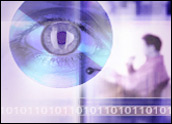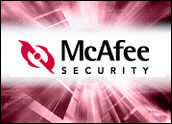
The need to identify and eradicate spyware programs will drive anti-spyware software revenues from US$12 million in 2003 to $305 million in 2008, according to an IDC research report.
From a minor annoyance for home-PC users to a major plight on enterprise environments around the world, the IDC report earlier this week said that spyware (also known as adware, malware, scumware, and a host of other sordid names) is infecting millions of computers with multiple purposes: stealing personal information, enabling identity theft, tracking users’ online activity, and selling the information back to anyone willing to pay.
Although not always malicious in nature, IDC reported that spyware still causes significant damage to legitimate software, network performance and employee productivity.
Moreover, the research firm said, it crosses the boundary between security and system management by deluging Help Desks with a siege of employee complaints about pop-up advertisements, applications failures and poor PC performance.
ISPs on the Spyware Bandwagon
Jupiter Research analyst Joe Wilcox told the E-Commerce Times that the nuisance of spyware programs are one reason why Internet service providers (ISP) like America Online (AOL) are bundling the “anti” software in their latest versions.
“Spyware slows down your computer performance and your Internet connectivity,” Wilcox said. “That’s not good if you are an ISP because the value you are offering is through your connective client.”
Spyware’s ability to track keystrokes, scan hard drives and change system and registry settings is a tremendous personal and enterprise security threat, according to analysts. These activities can lead to identity theft, data corruption and even theft of company trade secrets.
“Today, more malicious Spyware can easily infiltrate corporate firewalls,” Brian Burke, research manager, Security Products at IDC, said. “These programs make their way into the corporate Intranet under the guise of less-threatening network traffic and, once in, they can wreak havoc.”
On the ISP side, Wilcox said consumers see free offers for local weather monitors or holiday screensavers and download programs with spyware attached. Indeed, IDC reports that spyware is often bundled with legitimate programs, allowing it to easily pass through firewalls uncontested.
“Consumers are allowing their computers to get infected with spyware and then calling the ISP to complain,” Wilcox said. “So ISPs, like AOL, are beginning to move to address the problem.”
Other Key Findings
A recent IDC survey of more than 600 organizations listed spyware as the fourth-greatest threat to a company’s enterprise network security. IDC estimates that 67 percent of all computers (mostly consumer) have some form of Spyware.
Finally, the report revealed that rising spyware threats and increasing demand for protection have forced established security vendors to build, buy or partner with standalone anti-spyware vendors.























































Social Media
See all Social Media